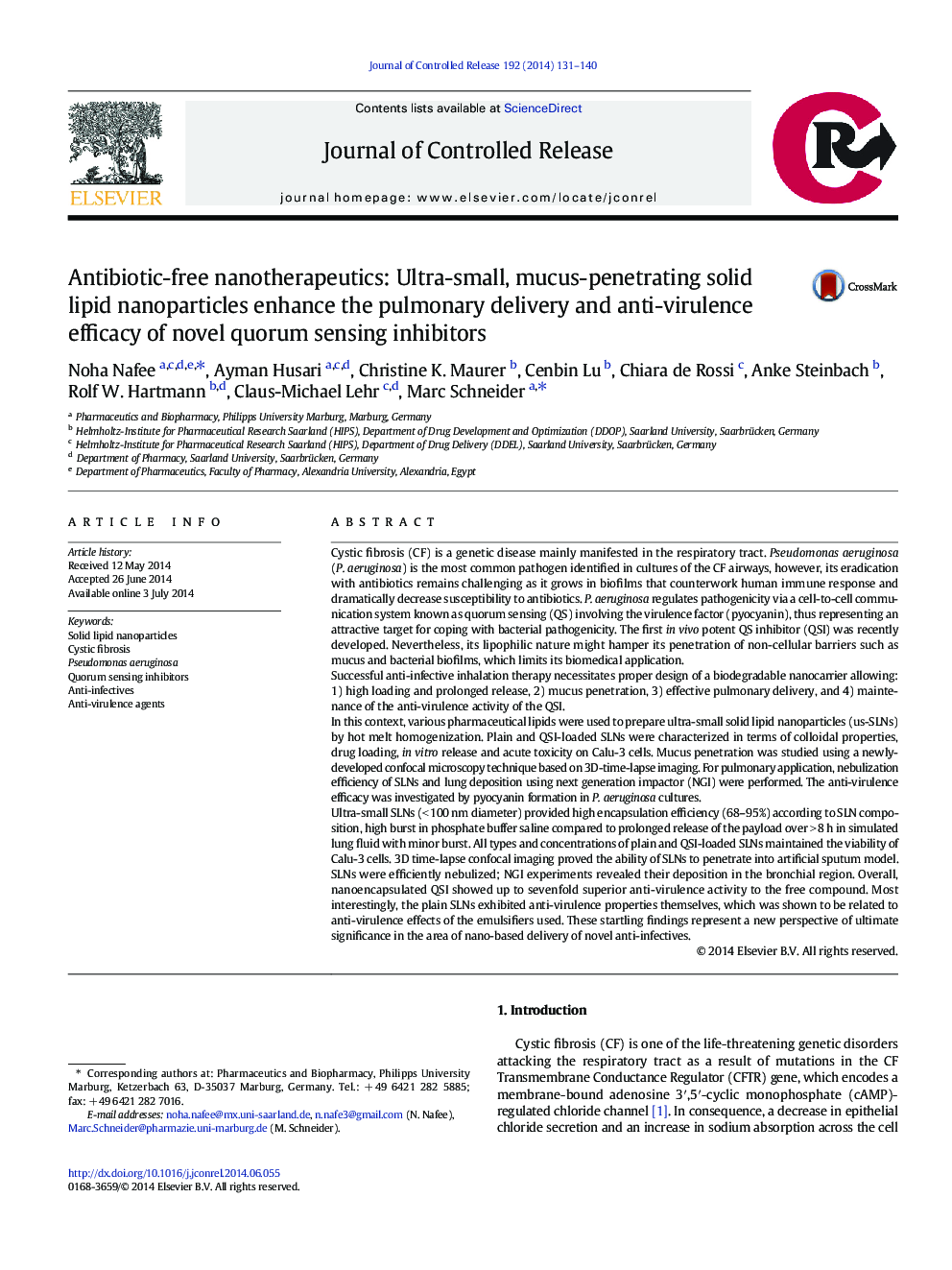| کد مقاله | کد نشریه | سال انتشار | مقاله انگلیسی | نسخه تمام متن |
|---|---|---|---|---|
| 1423936 | 1509057 | 2014 | 10 صفحه PDF | دانلود رایگان |
Cystic fibrosis (CF) is a genetic disease mainly manifested in the respiratory tract. Pseudomonas aeruginosa (P. aeruginosa) is the most common pathogen identified in cultures of the CF airways, however, its eradication with antibiotics remains challenging as it grows in biofilms that counterwork human immune response and dramatically decrease susceptibility to antibiotics. P. aeruginosa regulates pathogenicity via a cell-to-cell communication system known as quorum sensing (QS) involving the virulence factor (pyocyanin), thus representing an attractive target for coping with bacterial pathogenicity. The first in vivo potent QS inhibitor (QSI) was recently developed. Nevertheless, its lipophilic nature might hamper its penetration of non-cellular barriers such as mucus and bacterial biofilms, which limits its biomedical application.Successful anti-infective inhalation therapy necessitates proper design of a biodegradable nanocarrier allowing: 1) high loading and prolonged release, 2) mucus penetration, 3) effective pulmonary delivery, and 4) maintenance of the anti-virulence activity of the QSI.In this context, various pharmaceutical lipids were used to prepare ultra-small solid lipid nanoparticles (us-SLNs) by hot melt homogenization. Plain and QSI-loaded SLNs were characterized in terms of colloidal properties, drug loading, in vitro release and acute toxicity on Calu-3 cells. Mucus penetration was studied using a newly-developed confocal microscopy technique based on 3D-time-lapse imaging. For pulmonary application, nebulization efficiency of SLNs and lung deposition using next generation impactor (NGI) were performed. The anti-virulence efficacy was investigated by pyocyanin formation in P. aeruginosa cultures.Ultra-small SLNs (< 100 nm diameter) provided high encapsulation efficiency (68–95%) according to SLN composition, high burst in phosphate buffer saline compared to prolonged release of the payload over > 8 h in simulated lung fluid with minor burst. All types and concentrations of plain and QSI-loaded SLNs maintained the viability of Calu-3 cells. 3D time-lapse confocal imaging proved the ability of SLNs to penetrate into artificial sputum model. SLNs were efficiently nebulized; NGI experiments revealed their deposition in the bronchial region. Overall, nanoencapsulated QSI showed up to sevenfold superior anti-virulence activity to the free compound. Most interestingly, the plain SLNs exhibited anti-virulence properties themselves, which was shown to be related to anti-virulence effects of the emulsifiers used. These startling findings represent a new perspective of ultimate significance in the area of nano-based delivery of novel anti-infectives.
Figure optionsDownload high-quality image (201 K)Download as PowerPoint slide
Journal: Journal of Controlled Release - Volume 192, 28 October 2014, Pages 131–140
